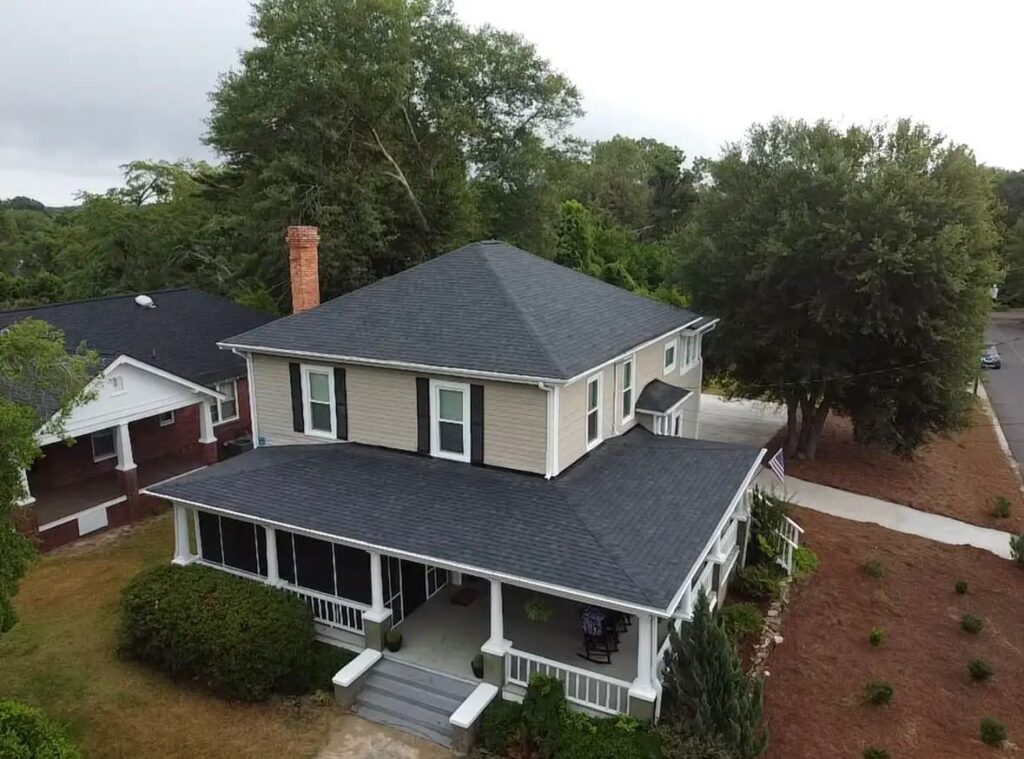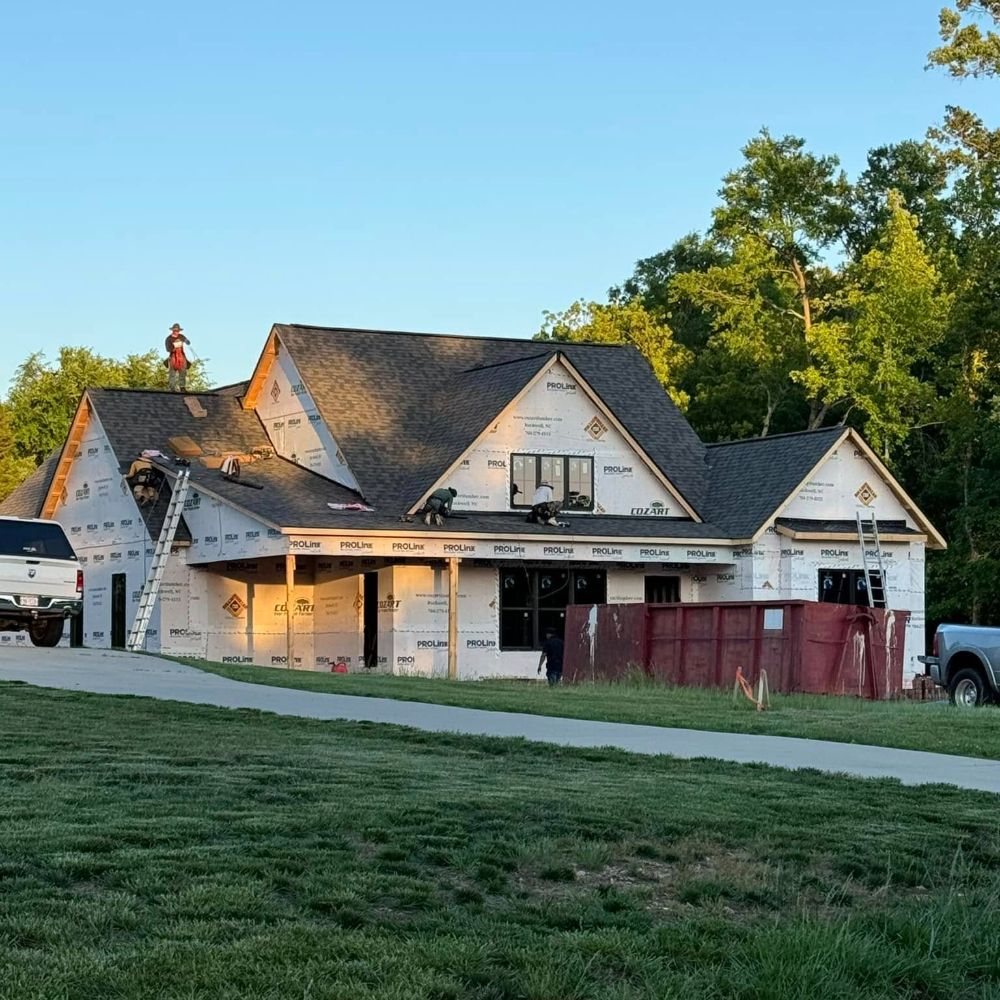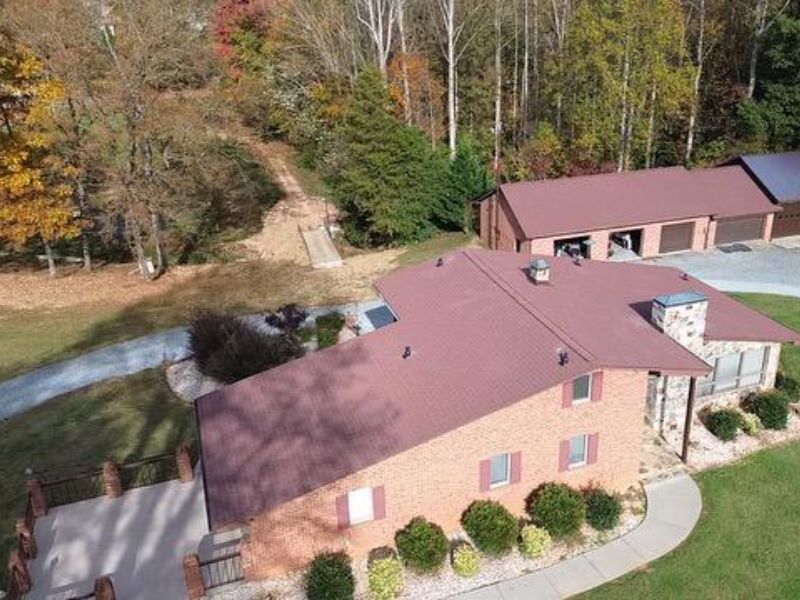
At William Ryan Roofing, we often hear the question: “Can Roof Installation Be Done in Winter?” The short answer is yes, but it’s not without its challenges. Winter roof installation requires specialized techniques, materials, and expertise to ensure a quality result that will protect your home for years to come.
In this guide, we’ll explore the intricacies of winter roofing, discussing everything from the unique challenges posed by cold weather to the innovative solutions we employ to overcome them. Whether you’re facing an emergency roof replacement or planning ahead, this article will provide valuable insights into the world of winter roof installation.
The Challenges of Winter Roof Installation
Battling the Elements
Winter weather presents a formidable obstacle for roofing professionals. Snow, ice, and frigid temperatures can make working conditions not just uncomfortable but also potentially dangerous. Moreover, these elements can interfere with the proper installation of roofing materials, potentially compromising the integrity of the roof.
For instance, snow and ice accumulation on the roof deck must be completely removed before installation can begin. This additional step not only adds time to the project but also requires careful execution to avoid damaging the underlying structure. Furthermore, the risk of sudden weather changes can disrupt work schedules and extend project timelines.
Despite these challenges, experienced roofing companies like William Ryan Roofing have developed strategies to work safely and effectively even in harsh winter conditions. By carefully monitoring weather forecasts and employing specialized equipment, we can minimize delays and ensure worker safety.
Material Limitations
Another significant challenge of winter roof replacement or installation is the behavior of roofing materials in cold temperatures. Many roofing products, particularly asphalt shingles, become less pliable in the cold, making them more difficult to work with and more prone to damage during installation.
For example, asphalt shingles may become brittle and crack when bent or nailed in freezing temperatures, leading to improper installation or damage that may not be immediately apparent but could cause issues down the line.
Additionally, the adhesive strips on shingles may not activate properly in cold weather, potentially compromising the roof’s wind resistance. To address these issues, roofing professionals must take extra precautions. This might include:
- Storing materials in a heated area until just before use
- Using special cold-weather adhesives
- Adjusting installation techniques to accommodate the materials’ reduced flexibility
Innovative Solutions for Winter Roofing
Specialized Materials and Techniques
At William Ryan Roofing, we’ve adapted our approach to meet the unique demands of winter roof installation. One key strategy is the use of specialized roofing materials designed to perform well in cold weather. These include:
- Cold-weather adhesives that bond effectively even at low temperatures
- Polymer-modified shingles that retain flexibility in cold conditions
- Ice and water shield membranes for enhanced protection against ice dams
In addition to using cold-weather-specific materials, we also employ specialized installation techniques. For instance, hand-sealing shingles with roofing cement can provide immediate adhesion when the weather is too cold for the shingles’ self-sealing strips to activate on their own. These adaptations allow us to install roofs effectively even when temperatures drop, ensuring homeowners get the protection they need regardless of the season.
Advanced Planning and Preparation
Successful winter roof installation requires meticulous planning and preparation. At William Ryan Roofing, we start by conducting a thorough assessment of the project site, taking into account factors like:
- The roof’s pitch and complexity
- Accessibility for equipment and materials
- Potential safety hazards unique to winter conditions
Based on this assessment, we develop a detailed project plan that includes contingencies for various weather scenarios. This might involve scheduling work during the warmest parts of the day, setting up temporary heating in work areas, or using specialized equipment like heated storage units for roofing materials.
By anticipating challenges and planning accordingly, we can minimize delays and ensure a smooth installation process even in the depths of winter.
The Benefits of Winter Roof Installation

Faster Project Completion
While it might seem counterintuitive, winter can actually be an ideal time for roof installation in some respects. The reduced demand for roofing services during the colder months often means that projects can be scheduled and completed more quickly than during the busy spring and summer seasons.
For homeowners facing urgent roofing needs, this can be a significant advantage. Rather than waiting weeks or even months for an opening in a contractor’s schedule, you may be able to have your new roof installed in a matter of days.
Moreover, the typically drier conditions of winter in many regions can actually facilitate faster work. With less chance of rain delays, roofing crews can often work more consistently, leading to quicker project completion.
Potential Cost Savings
Winter roof installation may also offer financial benefits for homeowners. Many roofing companies offer off-season discounts to encourage business during their slower periods. This can translate to significant savings on both materials and labor costs.
Additionally, by addressing roofing issues promptly in the winter, homeowners can avoid the potential for more extensive (and expensive) damage that might occur if problems are left unaddressed until spring. Water infiltration from ice dams or wind damage can cause significant interior damage if allowed to persist throughout the winter months.
Ensuring Quality in Winter Roof Installation
Rigorous Quality Control Measures
William Ryan Roofing understands that the challenges of winter installation require an even greater emphasis on quality control. To ensure that every winter roof installation meets our high standards, we implement a series of rigorous checks throughout the process. Our quality control measures include:
- Pre-installation material inspections to verify that all components are in optimal condition
- Regular temperature monitoring to ensure materials are being installed within recommended ranges
- Post-installation inspections to check for proper sealing and attachment
These steps help us identify and address any issues promptly, ensuring that the finished roof will provide reliable protection for years to come.
Ongoing Monitoring and Support
Our commitment to quality doesn’t end when the last shingle is in place. We recognize that winter-installed roofs may require additional attention as temperatures warm up in the spring. That’s why we offer follow-up inspections to all our winter installation customers.
During these inspections, we check for any issues that may have arisen as the roof settled and the weather changed. This might include:
- Verifying that all roof shingles have been properly sealed
- Checking for any signs of winter-related stress or damage
- Ensuring that all flashing and sealants are performing as expected
By providing this ongoing support, we give our customers peace of mind, ensuring that their new roof continues to perform optimally regardless of when it was installed.
For more details on roofing material standards, visit GAF Roofing Products.

Frequently Asked Questions
- Is it safe to install a roof in freezing temperatures?
While challenging, it can be safe with proper precautions. We carefully monitor weather conditions and use specialized equipment to ensure worker safety and installation quality.
- Will my warranty be affected if my roof is installed in winter?
No, as long as the installation is performed by certified professionals following manufacturer guidelines, your warranty should remain valid.
- How long does a winter roof installation typically take?
Project duration can vary, but winter installations may actually be completed faster due to less rain and reduced scheduling conflicts.
- Are there any roofing materials that can’t be installed in winter?
Most materials can be installed in winter with proper techniques. However, some sealants and adhesives may require special cold-weather formulations.
- Will a winter-installed roof be as durable as one installed in warmer weather?
Yes, when installed correctly using appropriate cold-weather techniques, a winter-installed roof should be just as durable as one installed in summer.
- How do you prevent ice dams during winter roof installation?
We use specialized ice and water shield membranes and ensure proper attic ventilation to minimize the risk of ice dams.
At William Ryan Roofing, we’re committed to providing top-quality roofing services year-round. While winter installations present unique challenges, our expertise and innovative approaches allow us to deliver exceptional results regardless of the season.
If you’re considering a roof installation this winter, don’t hesitate to reach out! We’re here to answer your questions and help you make the best decision for your home.
Contact Us
Looking for trusted roofing professionals? Find us on Google My Business for reviews, directions, and more! Click here to visit our profile.
